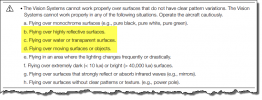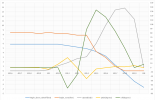Hey gang
I sadly joined the crash club 2 weeks ago and I'm trying to wrap my head around how it happened.
I was flying under a pier between pilings on the ocean and was about 5 to 10 feet off the beach with waves coming in. I had already done the same flight 5 or so times without issues. On the "final flight" I was pretty certain I cleared the other side of the pier but was distracted by a person on the beach approaching at which point I lost sight of the drone. As I stepped around one of the pilings to look for the drone I heard a dreaded clank, clank, clank, and then watched as the Mavic Air 2 splashed into about a foot of water. I was able to rescue it and subsequently ship it off to DJI Care Refresh for a replacement.
My question is would the waves have caused crash avoidance to increase the altitude of the drone? I'm 99.9% sure I didn't hit the left stick up though I fully understand more than likely a large % of the crash is user error as I lost sight of the drone.
Any thoughts or suggestions greatly appreciated
Btw for dramatic effect, I was able to save the video
T.I.A.
Opieos
I sadly joined the crash club 2 weeks ago and I'm trying to wrap my head around how it happened.
I was flying under a pier between pilings on the ocean and was about 5 to 10 feet off the beach with waves coming in. I had already done the same flight 5 or so times without issues. On the "final flight" I was pretty certain I cleared the other side of the pier but was distracted by a person on the beach approaching at which point I lost sight of the drone. As I stepped around one of the pilings to look for the drone I heard a dreaded clank, clank, clank, and then watched as the Mavic Air 2 splashed into about a foot of water. I was able to rescue it and subsequently ship it off to DJI Care Refresh for a replacement.
My question is would the waves have caused crash avoidance to increase the altitude of the drone? I'm 99.9% sure I didn't hit the left stick up though I fully understand more than likely a large % of the crash is user error as I lost sight of the drone.
Any thoughts or suggestions greatly appreciated
Btw for dramatic effect, I was able to save the video
T.I.A.
Opieos
Last edited:












